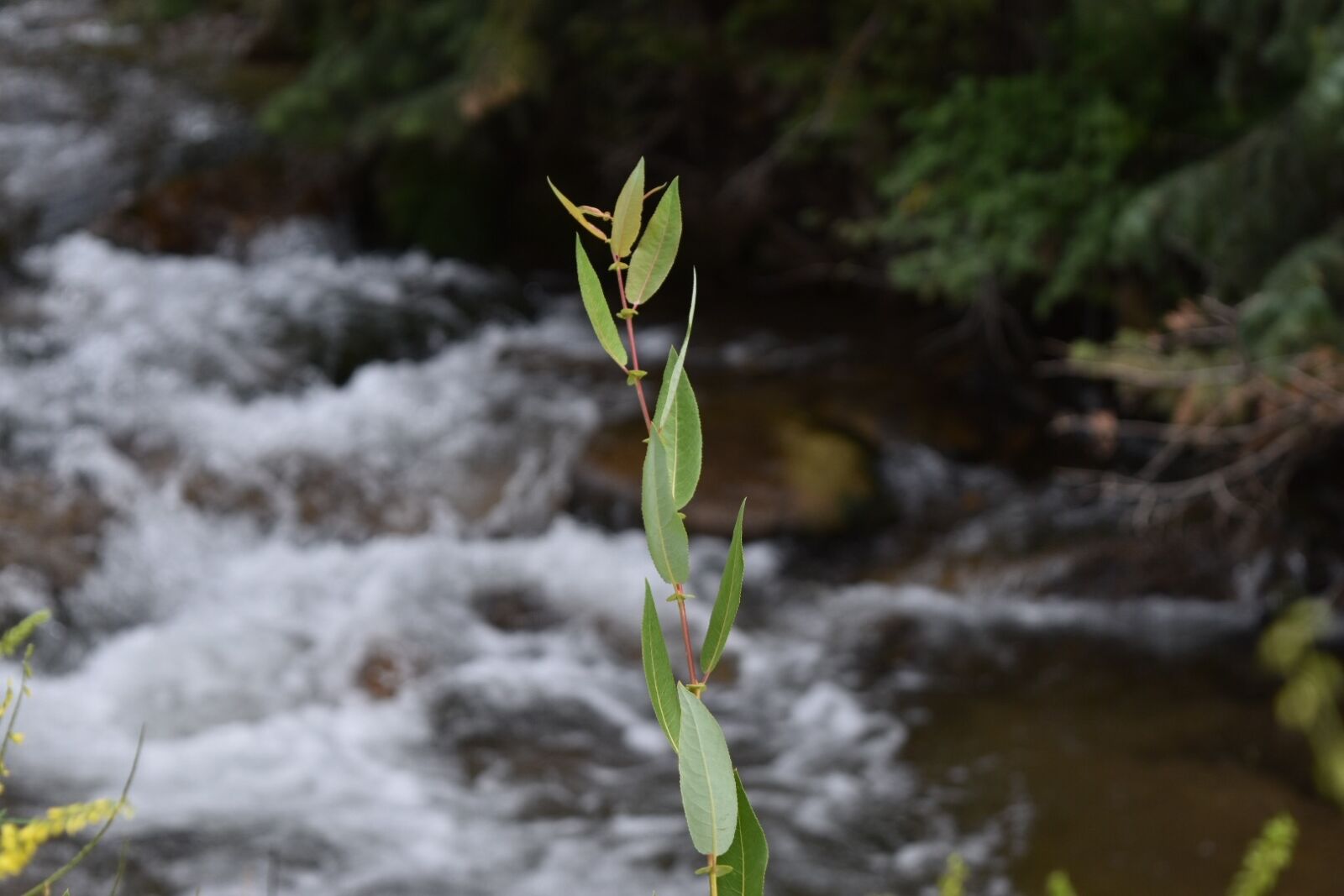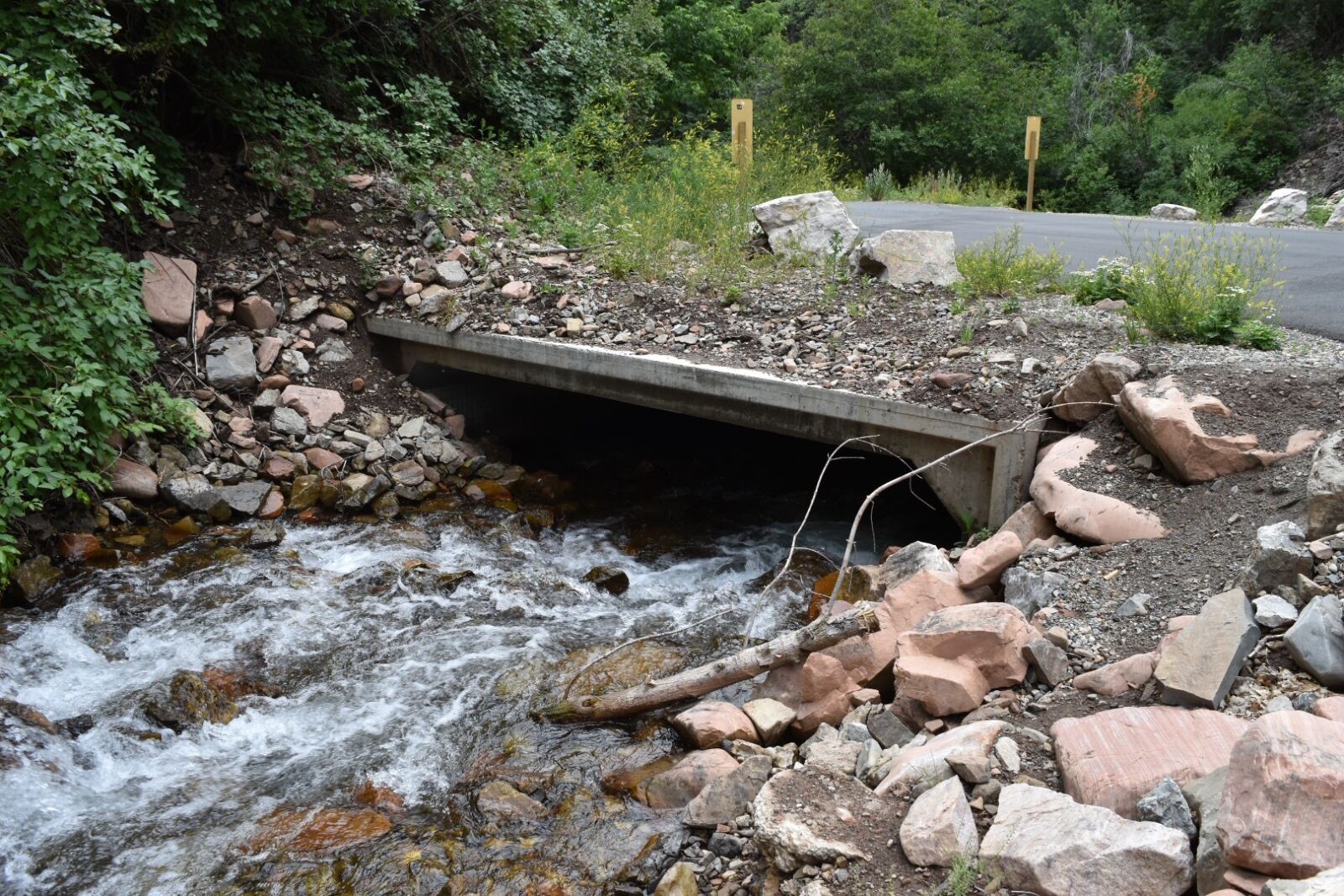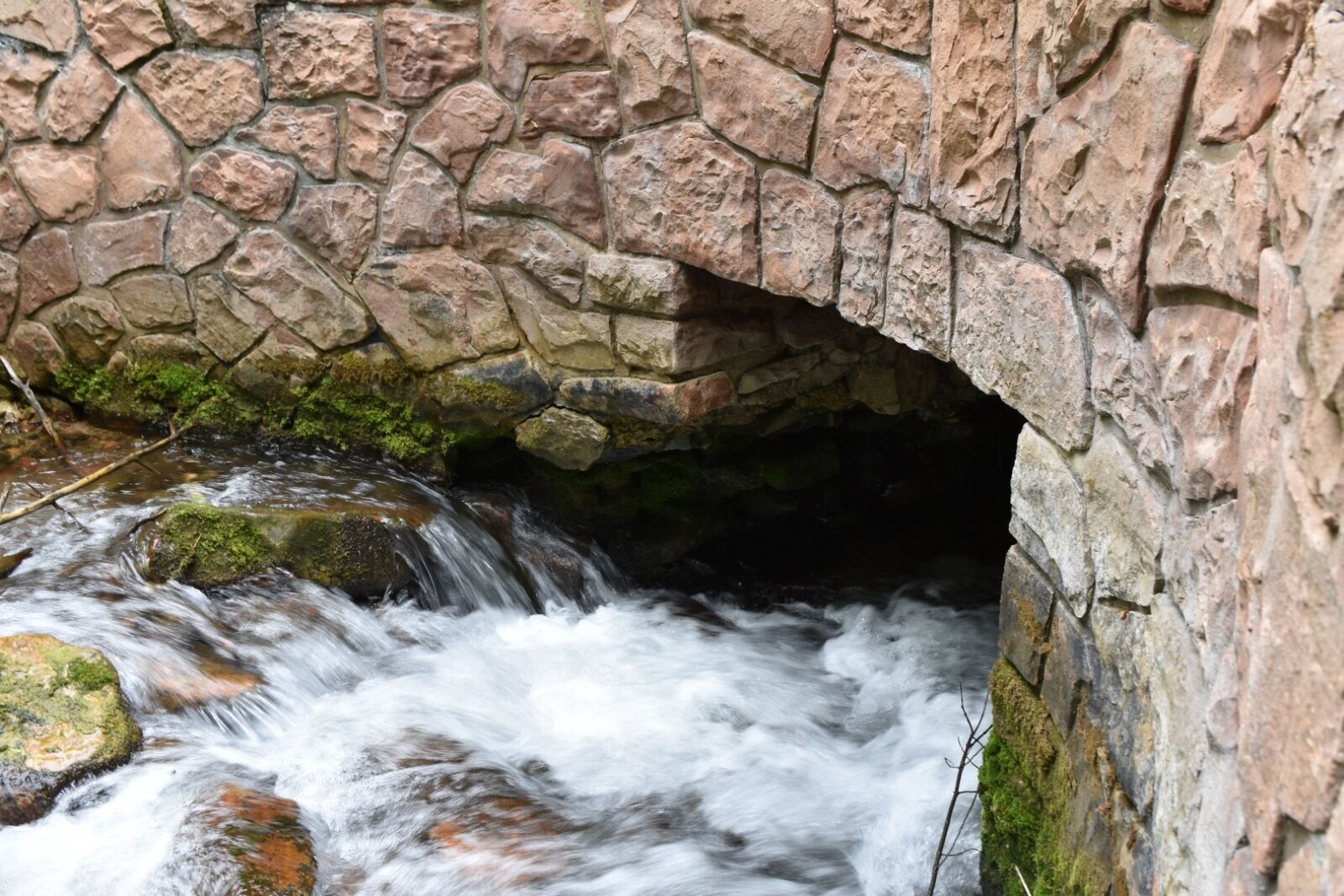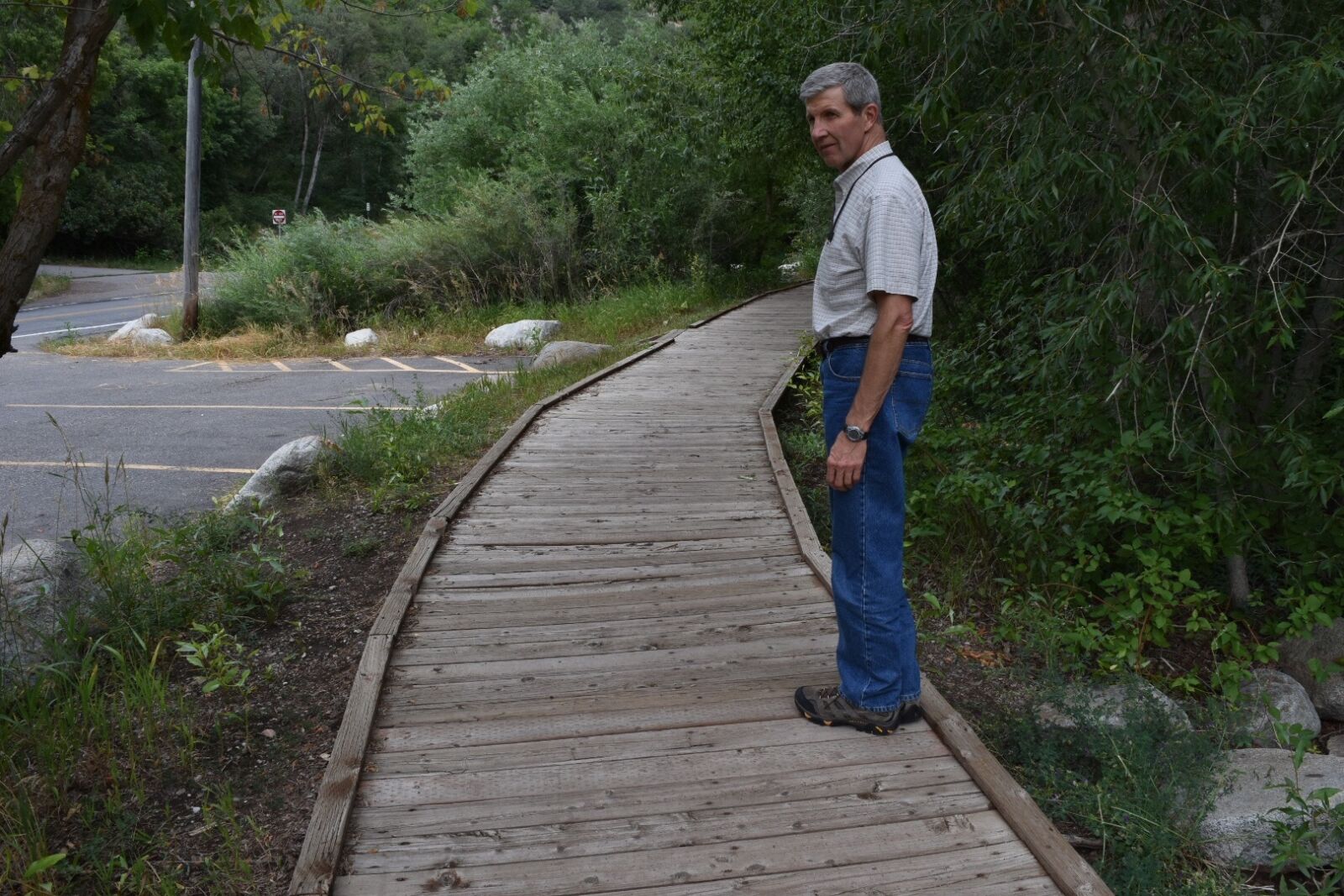I met Paul Cowley under a cloudy sky at a Park and Ride just west of the mouth of Mill Creek Canyon. Tall, friendly and talkative, Paul is the Natural Resources and Planning Officer on the Uinta-Wasatch-Cache National Forest that rises steeply from the western edge of Salt Lake City. I jumped into his giant Forest Service truck and we headed up the canyon.
“We got the first rain we’ve had in two weeks,” Paul noted. “It’s nice to have some clouds still.” I agreed. It had been sunny and in the mid 90s in Missoula for weeks and the 80-degree air in Salt Lake was a welcome respite from the intense summer sun.
Paul pointed up towards the mountain that loomed above us.
“See that line up there?” A thin strip of denuded vegetation ran down the steep slope. “That used to be a penstock that carried water to the power plant that was located where that house is,” he pointed to a large, well-landscaped house tucked into the hillside.
“Mill Creek got its name from all the mills that used to be here,” he continued. “There were lumber mills, grist mills, shingle mills, plus the power plant.”
The mills have long closed, replaced with fancy houses that sit along the creek in the first half-mile of the canyon. But as we drove farther up, those too disappeared. In a few minutes, we passed a small shack in the middle of the road. Paul explained that it was a fee station run by the county and that the money charged to access the canyon helped pay for maintenance and restoration.

Young willow planted on the dam site following the dam removal.
Mill Creek is a busy place. We passed trailheads and picnic areas nearly every 500 feet on the drive. Bicyclists zoomed up and down the road. Paul mentioned that they get roughly 165,000 cars per year, and even though the county charges $3 per car, it’s barely enough to pay for managing the heavy use, and not nearly enough to repair the century and half of damage to this beautiful canyon.
I had met Paul for a tour of Mill Creek Canyon where the NFF has been working with the U.S. Forest Service and a coalition of partners on a unique native fish and watershed restoration project. It’s a great example of how partners, the public and land managers like the Forest Service can work together over many years to restore a unique native fishery and improve water quality on a particular reach of stream
Paul tells me that the project got started in 2011; although, the impetus for restoring Bonneville Cutthroat Trout, the main native species the agency is working to restore in Mill Creek, stemmed from a 1997 plan to keep the fish off the Endangered Species list.
The NFF’s help has been instrumental in bringing non-traditional funders like the Eccles Foundation, the Sorenson Foundation and others to help support the project.
First, the Forest Service started reaching out to partners to build community support for the project. This was a key part of the project because the agency planned to use a chemical called Rotenone to kill all the fish in Mill Creek and then replace them with native species. The use of the chemical and the resulting loss of game fish like brown trout and rainbow trout were public relations concerns for the agency, so building support for the project was important.
Next, the Forest Service planned out the specific activities required to restore the fishery and improve watershed conditions. While Mill Creek isn’t currently part of the municipal watershed that serves Salt Lake City, Paul thinks that it will eventually become part of the system. The work included replacing seven outdated culverts with culverts that allow fish to migrate up and down the stream. These “box culverts” are made from cement, off site, and then trucked in and assembled in the streambed. The agency also removed an old dam that was blocking fish passage and restored another dam site by installing boulders and other natural material below the dam to bring the streambed up so that fish can swim upstream.
The Forest Service used Rotenone in three stages, dividing the creek into three sections that took advantage of natural barriers so that it could effectively treat the ten-mile creek over the course of a couple of years. The chemical doesn’t affect any other animals besides fish and has no impact on vegetation.
After the chemical is put into the creek, the agency then uses other chemicals that neutralize the Rotenone to ensure that there are no lingering effects from the treatment. After the creek is treated, the Forest Service and partners then restock the creek with native fish like the Bonneville Cutthroat Trout, long-nosed dace and sucker fish.

One of the new box culverts the NFF helped fund.

A CCC-era culvert that the NFF will help replace this fall. You can see how the stream has eroded some of the existing culvert because it is undersized.
The NFF has been involved in this project since 2012, when it included the Uinta-Wasatch-Cache National Forest in our Treasured Landscapes, Unforgettable Experiences program. According to Paul, the NFF’s help has been instrumental in bringing non-traditional funders like the Eccles Foundation, the Sorenson Foundation and others to help support the project. Our efforts helped support two of the culvert removals and the dam site remediation, and we are raising funds for three other culvert replacements and to replace an old boardwalk that provides access for disabled and elderly visitors.
Paul is particularly proud of the educational opportunities that this project has provided to area youth. A large Boy Scout camp runs along the creek and Paul is working with the group to improve water quality in a small pond that lies on the Boy Scout’s property. The scouts’ involvement helps them earn merit badges and offsets costs for restoring this portion of the creek. Paul and his colleagues also bring other area youth up to the creek to learn about native fish, riparian ecosystems and watersheds.

Paul Cowley on the board walk that the NFF is working to replace this summer.
As we drove back down the canyon, a fly-fisher was ambling up the road. Paul pulled over and rolled down my window, calling across the truck.
“Catch anything?” he asked.
“No, not yet,” replied the angler.
“There’s a bunch of fish up at the beaver pond, you should head up there,” Paul advised.
“Thanks, I think I’ll do that.”
We headed back down the road and passed another fly-fisher just a few minutes later.
All told, this project will restore 11 miles of native fish habitat (just over ten miles of Mill Creek and another mile of Porter Fork, a tributary of the Mill Creek), something Paul is proud of.
“The state of Utah offers a medallion for catching all four of the native trout species that exist in the state,” he tells me. “Mill Creek is now one of the best opportunities in the state to catch Bonneville Cutthroat Trout, so we’re seeing lots of anglers up here. It’s pretty cool.”
LEARN MORE ABOUT OUR WORK ON THE UINTA-WASATCH-CACHE NATIONAL FOREST.

